One of the benefits of camping in an RV is the ability to have power for whatever you need, just like at home. While many RV appliances, lights, and other components run off 12V batteries, did you know you can also power regular AC devices with your 12V supply? Yes, you can, and this is accomplished with an inverter. Many RVs will come supplied with an inverter, a small yet powerful electrical device that allows you to harness the power of your battery for all of your electrical needs.
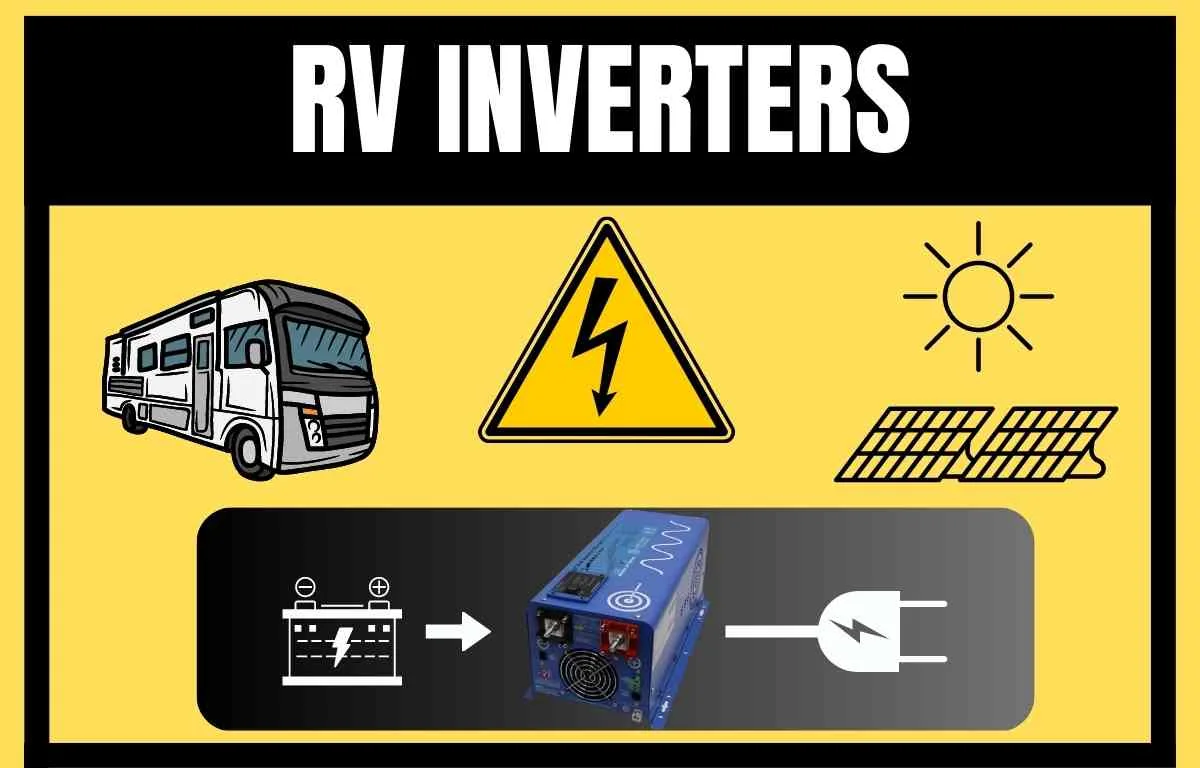
With years of experience in writing about RVs and their intricate components, I specialize in demystifying complex topics like inverters for new RV enthusiasts. My goal is to distill and simplify the information, ensuring you grasp the essential aspects of RV mechanics and enjoy a smooth RVing experience. After reading this article, you’ll leave with a better understanding of the purpose and benefits of an RV inverter.
Inverters are especially useful if you have a larger battery bank and want access to all of your RV household appliances when not connected to shore power. While many RV owners already have this installed in their rig, many are unaware of how it works. So, let’s take a deeper dive into the world of inverters. We’ll run through everything you need to know about what an inverter does, the available types, how they work, the benefits of having one, how to choose the right one for your needs, installation, maintenance, and troubleshooting common problems.
We cover a lot of information on RV inverters in this article, but if you just need some quick information, below are the basics. I expand on all of these topics in full detail below.
RV Inverter Basics
- RV Inverter Function: An RV inverter is a device that converts 12-volt DC power from your RV’s battery into AC power, which is necessary for running appliances like microwaves and air conditioners that require AC power.
- Identifying an RV Inverter: To determine if your RV has an inverter, check your owner’s manual or locate it physically, often installed near the battery in a ventilated area.
- Converter vs. Inverter: A converter is not the same as an inverter. While an inverter converts DC power to AC, a converter does the reverse, converting AC power to DC.
- Inverter Types: RV inverters come in two types: pure sine wave inverters, ideal for sensitive electronics, and modified sine wave inverters, which are more economical and suitable for most appliances.
- Inverter Operation: An RV inverter works by taking DC power from the RV’s battery and converting it into AC power through an oscillator circuit and transformer.
- Inverter Advantages: An RV inverter allows the use of AC-powered appliances off-grid and provides a more stable power source than some external power sources.
- Selecting an Inverter: When selecting an RV inverter, consider the power requirements of your devices, the type of inverter, and the size of your RV’s battery bank.
- Inverters with Solar Power: Inverters are crucial in solar power setups, converting the electricity generated by solar panels and stored in batteries into usable AC power.
- Inverter Installation: Installation should ideally be done by a professional and involves choosing a location, mounting the inverter, and connecting it to the battery bank and electrical panel.
- Inverter Maintenance: Maintenance involves ensuring the inverter is clean and free of debris and periodically checking connections and wiring.
- Inverter Troubleshooting: Common issues include overheating, blown fuses, and faulty wiring. If problems persist, it’s best to consult the manufacturer’s instructions or a professional.
Introduction to RV inverters
Before we dive into the specifics, let’s start with the basics. An RV inverter is a device that converts DC (direct current) power from your RV’s battery into AC (alternating current) power that can be used to power your RV’s appliances and electronics. In other words, its primary function is to take power stored in your RV’s battery and make it usable for things like your TV, microwave, and other devices that require 120 v AC power. It’s a powerful and extremely useful component of your RV electrical system.
What is an RV inverter, and what does it do?
An inverter is a device that converts 12-volt DC power into AC power. This is important because most RVs have a DC power system, meaning that the RV battery provides power to the lights, water pumps, and other basic systems. However, many RV electrical appliances and electronics require AC power, such as your microwave, air conditioner, and entertainment system. An RV inverter allows you to use these devices without being connected to an external AC power source.
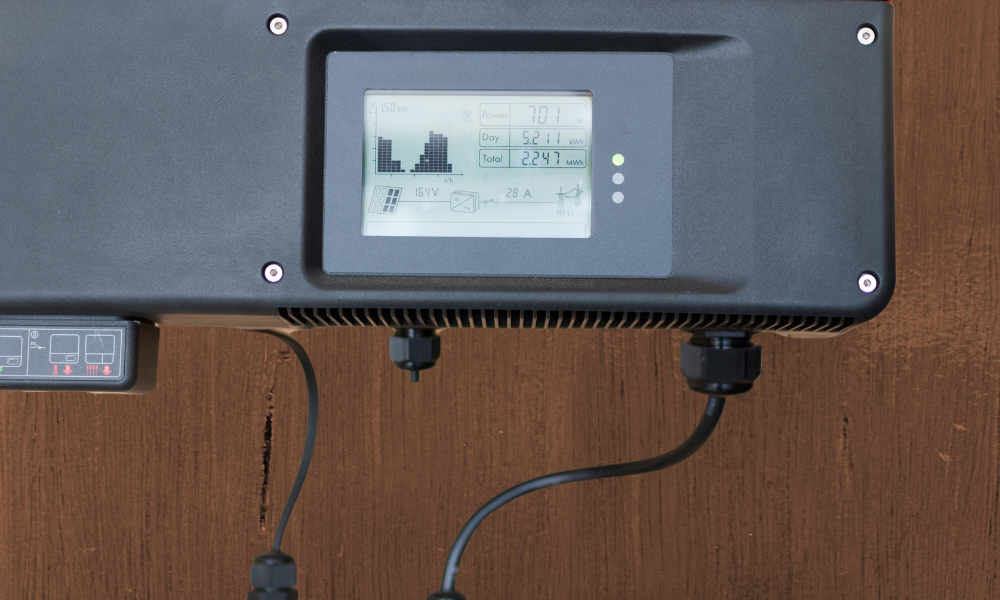
Since an inverter relies on DC power, you will be limited by the amount of electricity stored in your RV’s batteries. An inverter is sized for the amount of electricity it puts out, meaning that if you need to power larger AC appliances like an air conditioner, you will require a larger inverter and more stored energy in your batteries. On the other hand, you can use a smaller inverter if you are powering electrical outlets or small appliances with lower watt requirements.
How do you tell if you have an inverter?
If you’re unsure if you have one, you can check your owner’s manual or look for it installed in your camper. The inverter will be located between the battery and the electrical box, but it’s usually closer to the battery, as it’s optimized when there is a short run of 12V power. An inverter needs air to cool, so it will typically be in a well-ventilated area. This is sometimes located in the storage compartment in the front of the RV (assuming that’s where your RV batteries are, or it could also be on the underside of your RV. One way to test if you have an inverter is to unplug from shore power and test to see if any of your AC plugs or devices still work. Also, you’ll want to test items that don’t operate on 12V DC power, like your outlets or TV. If they turn on, then you have an inverter.

I have a converter. Is that the same thing as an inverter?
While they sound similar and provide similar functions, they’re not the same. While an RV inverter will convert 12 v DC power to AC electricity, an RV converter will do the opposite. It converts the AC power when plugged into the power grid or generator power to DC (battery power). Almost all RVs will have a converter, as this is how you charge your house batteries and run your 12V appliances. A converter is similar to a battery charger, but it’s permanently installed in your RV. You’ll likely see a breaker for it on your electrical control panel. In short, the main difference is the type of electricity it converts.
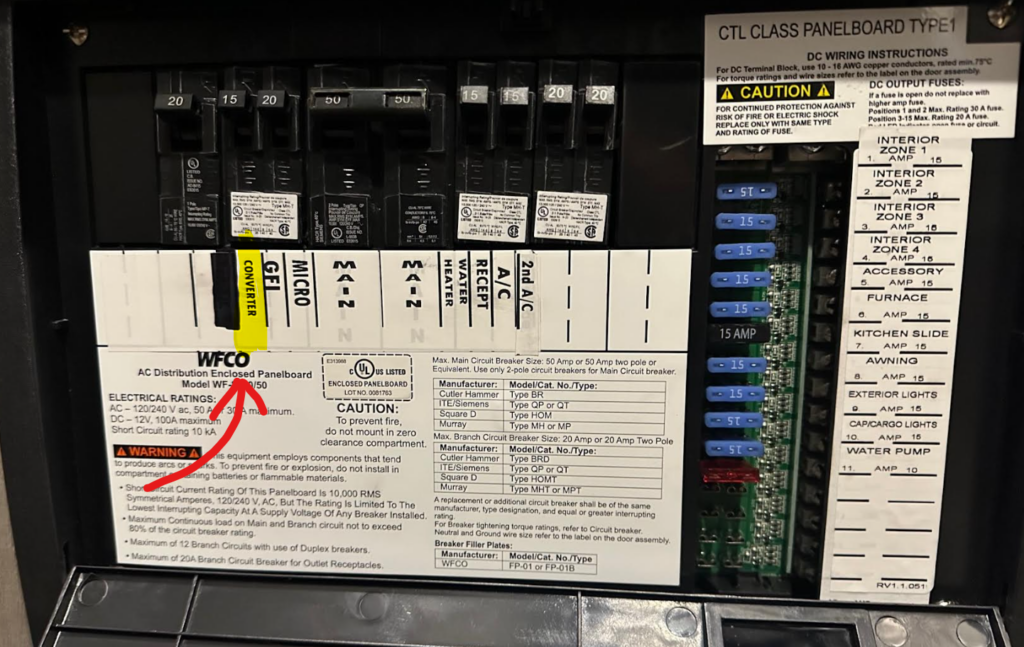
Different Types of inverters
There are two main types of inverters: a pure sine wave inverter and a modified sine wave inverter (also called square wave inverter). Pure sine inverters are the more expensive option but provide a cleaner and more stable power supply. This makes them ideal for sensitive electronics like laptops and medical equipment. On the other hand, modified sine wave inverters are less expensive and can power most appliances and electronics. Still, they may produce a slightly distorted AC waveform that could potentially cause issues with some devices.
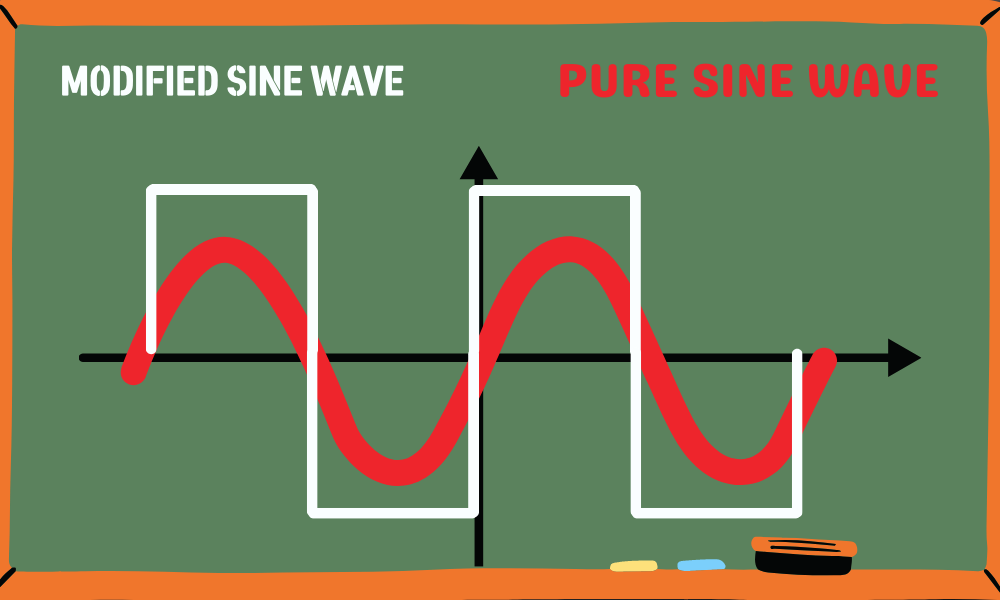
If you’re purchasing an inverter, choosing a pure sine wave one is always best. This will ensure that you have the correct type of energy to feed your sensitive electronic devices. While a modified sine wave inverter will work, it can cause spikes in electricity that can overload electronics. These types of inverters work fine for less sensitive electrical devices like power tools, a coffee maker, or a
How does an RV inverter work?
An RV inverter takes the DC power from your RV’s battery and uses it to power an oscillator circuit. This circuit generates an AC waveform sent through a transformer to increase the voltage to the desired level. The resulting AC power is then sent to your RV’s electrical panel, which can be distributed to your appliances and electronics.
Benefits of having an RV inverter
The main benefit of having an RV inverter is the ability to use AC-powered appliances and electronics without being connected to an external power source. This gives you more flexibility when it comes to where you can park your RV and how long you can stay there. Additionally, RV inverters can provide a more stable power source than some external power sources, which can be especially helpful if you’re in an area with fluctuating voltage.
- Allows you to use your RV’s battery to power household appliances and electronics that require AC power
- Provides a reliable source of power when camping off-grid or during power outages
- It can reduce the need for a generator, saving on fuel costs and noise pollution.
- Offers convenience and comfort while traveling, allowing you to use appliances like a microwave or TV
- Can increase the value of your RV, making it more attractive to potential buyers
- Provides a backup power source for emergencies
- It can extend the life of your RV’s battery by preventing deep discharging
- It allows more flexibility in choosing campsites or parking locations, as you don’t necessarily need access to electrical hookups.
Choosing the right RV inverter for your needs
When choosing an RV inverter, there are a few things to consider. First and foremost, you’ll want to ensure the inverter can handle the power requirements of the devices you want to use. This means checking each device’s wattage and voltage requirements and ensuring the inverter can supply enough power. You’ll also want to consider the inverter type (pure sine wave vs. modified sine wave) and the size of your RV’s battery bank.
|
|
N/A
|
N/A
|
The inverter size is measured in watts. This will determine how much power it can deliver at one time when connected to the batteries. The size of the inverter will be listed in the project description. A larger inverter will be bigger and usually more expensive. While a small inverter may be more affordable, you won’t be able to power larger appliances from it, like RV air conditioners, microwaves, or anything that draws a lot of amperages.
For example, a 13,000 BTU RV air conditioner may require 2,800 watts of starting power and 1,800 watts of running power. In this scenario, a 1000-watt inverter will be too small. However, if you’re powering small devices, you may not need as high a number of watts. Additionally, a higher-wattage inverter will only be useful if you have enough battery power to supply it. Running an RV air conditioner for an extended period will require quite a large battery bank, which usually requires a custom setup.
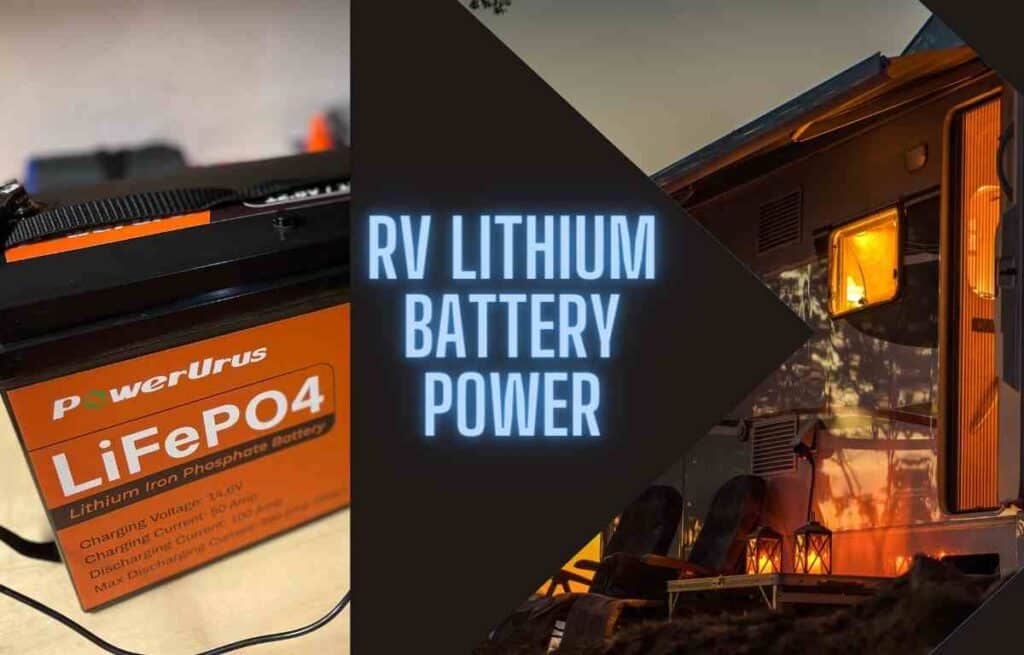
It’s also important to purchase an RV power inverter designed for RV usage. RV inverters are designed to be permanently mounted and connected to your batteries, so they should be made specifically for this purpose. As a general rule of thumb, a 1000-watt to 2000-watt inverter is usually fine for electronic power needs that don’t include air conditioning, water heater, or electric heating. However, heavy battery users, like boondockers who do a lot of dry camping for long periods of time, may opt for a larger 3000-watt inverter.
RV inverters and solar power setups
If you have solar power, an inverter is a must-have device. Solar power systems usually incorporate large inverters for bugger battery banks. The Solar panels will convert the sun into electricity, which gets stored in the RV batteries. The inverter will then convert that to AC power for you to use.
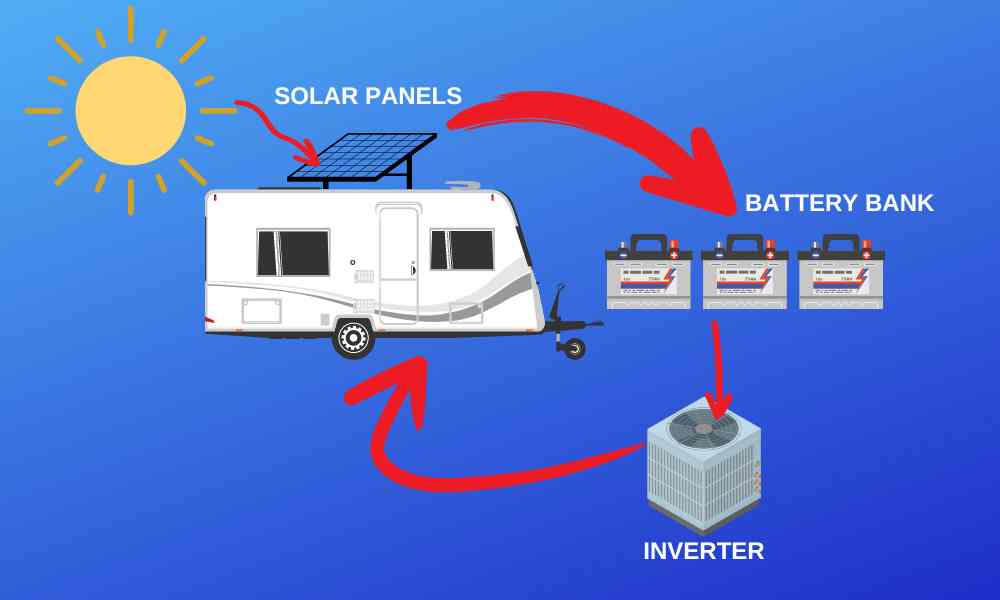
Installation of an RV inverter
Installing an RV inverter can be a bit tricky and is best left to a professional unless you have experience with electrical work. The first step is to choose the location for the inverter and mount it securely. From there, you’ll need to connect the inverter to your RV’s battery bank and electrical panel, following all safety guidelines and manufacturer instructions. It’s crucial to locate the inverter in a well-ventilated area as close to the battery as possible.
Additionally, an inverter should be placed in an area where it won’t get obstructed. For example, if you install it in your cargo storage area, you must ensure camp chairs, tents, hoses, etc., don’t cover it. Remember, the power output of the inverter can be pretty high and dangerous, so take care when installing it.
Maintenance of an RV inverter
RV inverters don’t require much maintenance beyond making sure they’re clean and free of debris. However, it’s important to periodically check the connections and wiring to ensure everything is secure and functioning correctly. It’s also a good idea to have the inverter inspected by a professional every couple of years to catch any potential issues early on. While failures are rare, a malfunctioning inverter can cause dangerous situations like fires or electrical shocks.
Troubleshooting common problems with RV inverters
Like any piece of equipment, RV inverters can experience issues from time to time. Some common problems include overheating, blown fuses, and faulty wiring. If you’re experiencing issues with your RV inverter, it’s best to consult the manufacturer’s instructions or a professional to diagnose and fix the issue. For example, while changing a blown fuse is easy, it’s important to know why it blew. If you replace it and it keeps tripping, that clearly indicates something is wrong. You are drawing too much power, or the device could have a loose connection or problem.
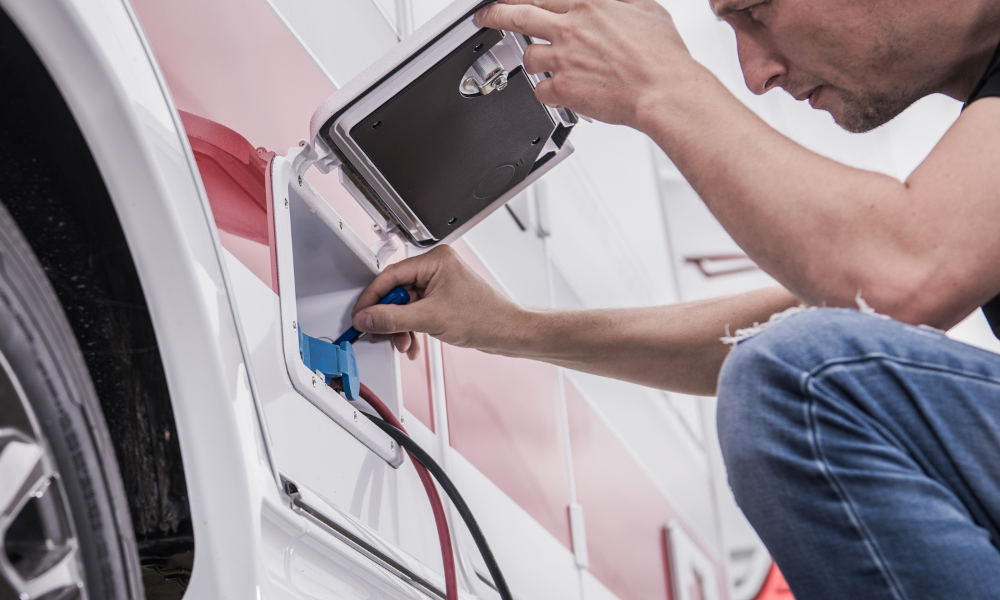
Final Thoughts
Overall, an RV inverter is an essential piece of equipment for any RV owner who wants to have the flexibility to camp off-grid or in areas without access to external power sources. By understanding how they work, their benefits, and how to choose, install, and maintain one, you can ensure that you have a reliable power source for your RV’s appliances and electronics. However, an inverter is not useful if you have enough 12V DC battery power to supply it.
RV inverters are not difficult to install, but they will require modifications to your electrical system. It’s a good idea to seek the help of a professional if you aren’t familiar with this type of work. Additionally, while inverters are pretty reliable, they can malfunction. Unless you’re certain of what caused it to stop working, it’s best to call an electrician before you use it again.
If you have any questions or personal experiences with inverters, feel free to leave a comment below and contribute to the discussion. Happy trails, and I hope to see you on the road.

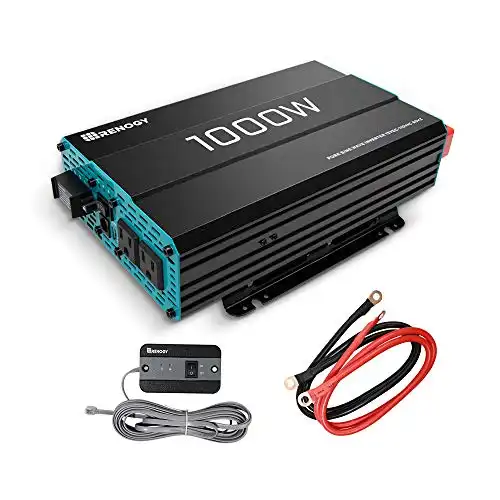
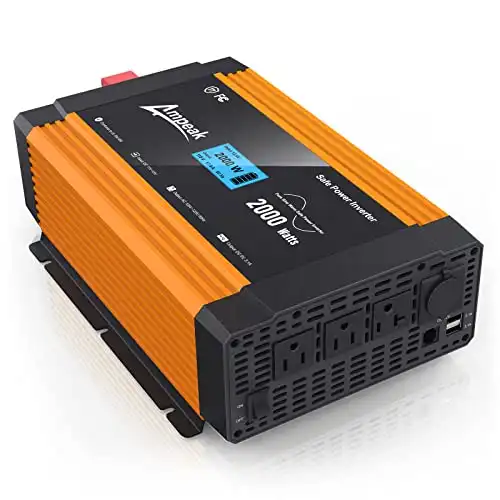
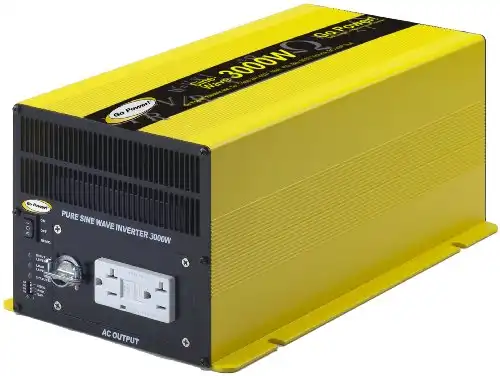

How do I restore the power level of my batteries between the trips that needs the inverter to keep fridge running?
Connect batteries to a trickle charger while connected to shore power?
You’re RV will have a converter and charge the batteries when plugged in. If you don’t plug it in, a trickle charge will do the job. However, if you’re only storing for a short time in above freezing temps, the batteries will hold a charge until your next trip.